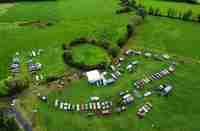‘What goes up, must also come down’
What recent turbulent flights signal about how anthropogenic climate change is manifesting
Oftentimes, when I am reading catastrophic opinion pieces about the environment, I recall a conversation I once had with a group of friends. Someone was off-handedly talking about how “Climate change is killing the planet”, when another person in the group piped up with, “It’s killing us, the planet will be fine. Only more so if it does kill us”.
Besides being an absolute optimist, the interrupter was also omitting a key detail. Because, of course, it’s not just “us”; human life is far from the only type of life being affected by the environmental crisis. Anthropogenic climate change (caused by human activity) is occurring at a speed and scale that outpaces many species’ ability to adapt. When we talk about impact, it’s important to recognise that it’s not just about our extinction, but about the annihilation of the countless other forms of life that share our planet.
But the interrupter’s main point, about the resilience of the planet itself, was generally understood.
Earth has endured drastic changes throughout its history, long before humans existed. The planet has demonstrated a remarkable resilience and capacity for life to adapt, evolve, and diversify, even after massive extinction events. In the worst-case scenario, where we do nothing and weather events intensify and intensify into un-liveability, the end of “us” is just that; not necessarily the end of anything else. Climate change poses serious (and indeed potentially fatal) challenges to current ecosystems and human societies, but, to the aforementioned-interrupter’s point, that isn’t to say it’s “killing the planet” itself.
But the more compelling (and dare I say, slightly-less nitpick-y) aspect of their point, the thing that springs to my mind regularly when reading about the climate crisis’s latest tragedy, is the idea of ‘balance’ behind it. That we, as humans, have done such harm to the environment, that the environmental changes we induced are now putting us at risk of harm, “killing us”.
Between rises in floods, heatwaves, hurricanes, wildfires, droughts, sea levels, and storm surges, the consequences of climate change have been plain to see, and increasingly so, for some time now. New records are set like clockwork – “all-time high”, “hottest month ever”, “wettest month ever” etc. But we’re also seeing this impact manifesting in ways we maybe wouldn’t have predicted; things like unusual weather events in atypical regions, new animal migration patterns and hybrids, and even, as recent events have illustrated, more turbulent plane rides.
On Sunday, a Qatar Airways flight into Dublin encountered serious turbulence above Turkey, reportedly causing people to “hit the roof” of the plane. This incident came just five days after headlines broke about the Singapore Airlines flight that hit sudden turbulence above Myanmar, causing it to dramatically lose altitude, and leading to the death of one passenger and injuries to 104 others.
The quick succession between these two specific incidences is sort of coincidental; aviation experts have reported no obvious atmospheric or meteorological occurrences linking the events directly. But generally speaking, incidents of severe turbulence are on the rise, jumping 55% between 1979 and 2020.
Climate change has intensified the occurrence of ‘clean turbulence’, which, as opposed to turbulence caused by storms or terrain features, arises almost without warning. It cannot be seen on a radar, meaning less opportunity for evasive safety measures, even those as minor as getting the seatbelt light turned on before turbulence hits. A warming world destabilises the upper atmosphere, with different weather systems – differing air pressure, temperature, and wind speed, etc – colliding to result in potentially violent outcomes.
Aviation experts contend that despite all this, air travel remains a remarkably safe way to travel, even commenting that modern vessels are in fact performing particularly impressively given just how extreme weather changes have become – this in tandem with the ever-evolving safety standards being put in place to respond to new challenges facing the industry.
This exemplifies one of many ways we are earnestly trying to protect ourselves by adapting to new climate conditions. But unfortunately, we are only pushing the boat out if we’re not also working to stop the harm we’re inflicting in the first place.
If we continue with this trajectory, the ways in which we have damaged the environment will inevitably come back to bite us – often in ironic ways. For example: overfishing will do more untold damage to marine life, monoculture farming and excessive irrigation will further soil degradation and water depletion, deforestation will increase the risk and severity of wildfires, and for all the more planes we put in the sky, we will become less and less assured of their safety. What goes up, must come down.
Were it not for how impossible it is to ignore the very real, devastating impact this has on people’s lives and livelihoods, it would be almost poetic: personify the planet, and you can look at it as Mother Earth, fed up with all our transgressions, deciding enough is enough and washing out the humans with tsunamis and floods, flicking them away with earthquakes, plucking them and their polluting vessels out of the sky with turbulence. It goes back to that idea of ‘balance’, and the planet’s resilience through adaptation, a balance that, playing out in the current context, feels almost karmic. Biblical. Something akin to the story of Noah’s Ark.
But luckily, unlike Mr Noah, we are not at the complete mercy of an Old Testament God – however much it may be slimming, we do have opportunity to alleviate the crisis in some way.
The dangerous tipping points that signal irreversible damage, which we’re heard about for years, are now realities we are staring down the barrel at. Europe is warming twice as fast as the global average. The world is warming quicker than anticipated, and the forecast was already dismal. Minister for Climate Eamon Ryan stressed this development this week, warning that, “We’re heading towards a 2.5-degree world that has huge risks attached to it”.
The latest projections published recently by the Environmental Protection Agency (EPA) showed Ireland was not on course to meet its carbon emissions reduction targets – we’re set to reduce by just 29%… the legally-binding target being 51%. I know we’re all sick to death of hearing the same calls to actions about the environment, but there has never been a time that such urgent, dramatic action, and stringent limits, were as needed.
It’s worth noting though that Minister Ryan and environmental groups have highlighted that EPA’s projections don’t tell the full story; some of the Government’s policies were not backed up with detailed implementation plans in time, and so weren’t included in figures. So hopefully when everything does come together, meaningful change will be enacted in time.
Friends of the Earth chief executive Oisín Coghlan commented this week that one silver lining to this news is that “The Government knows what it has to do, it just needs to get on with it faster”. In this year of elections, it’s vital politicians are made fully aware that “getting on with it” needs to be a top priority on their agendas – because if we keep letting the damage pile up, the devastating consequences will come crashing down on us, in some way or another.






